In the vast plains of South Africa, the dry season is in full swing. Animals are in desperate search of food and water as the heat’s mirage play a cruel trick on them.
In the distance, a trio of dark figure move at a steady pace heading towards the edge of the woodland. As they get closer, it becomes obvious that one of them is not doing very well. The poor creature is struggling to keep up with the other two, stumbling over and clearly having difficulty getting back up.
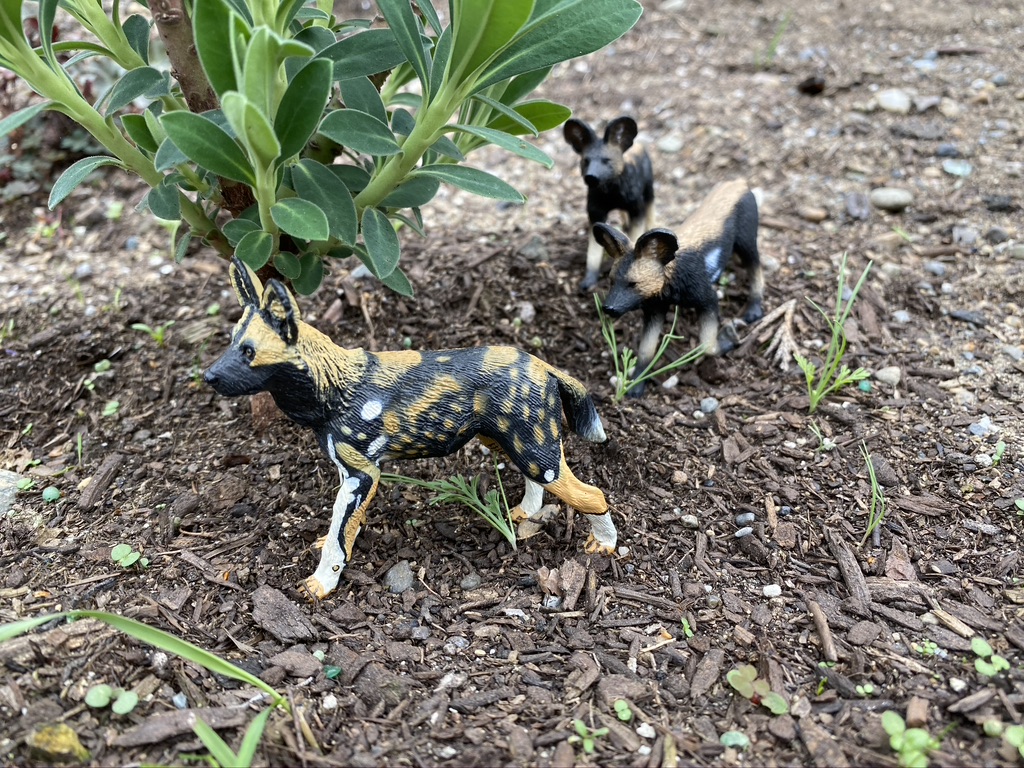
Perhaps sensing that their companion is in trouble, the other two waits for it to catch up. Exhausted, the animal lays down under a huge boulder. The other two decided that it was best to spend the rest of the day here to give their companion a chance to rest.

In the early daylight hours, only two figures move, the third one lay still, dead. The remaining animals reluctantly moves on, giving one last look at their fallen companion before running off without looking back into the woodlands.The remaining pair are the sole survivors of a pack that used to number 20 animals strong, they are the lucky ones to , miraculously surviving the rabies outbreak that decimated their entire pack.The surviving pair, a male and a female, given a chance and some luck, will one day form their own impressive pack.
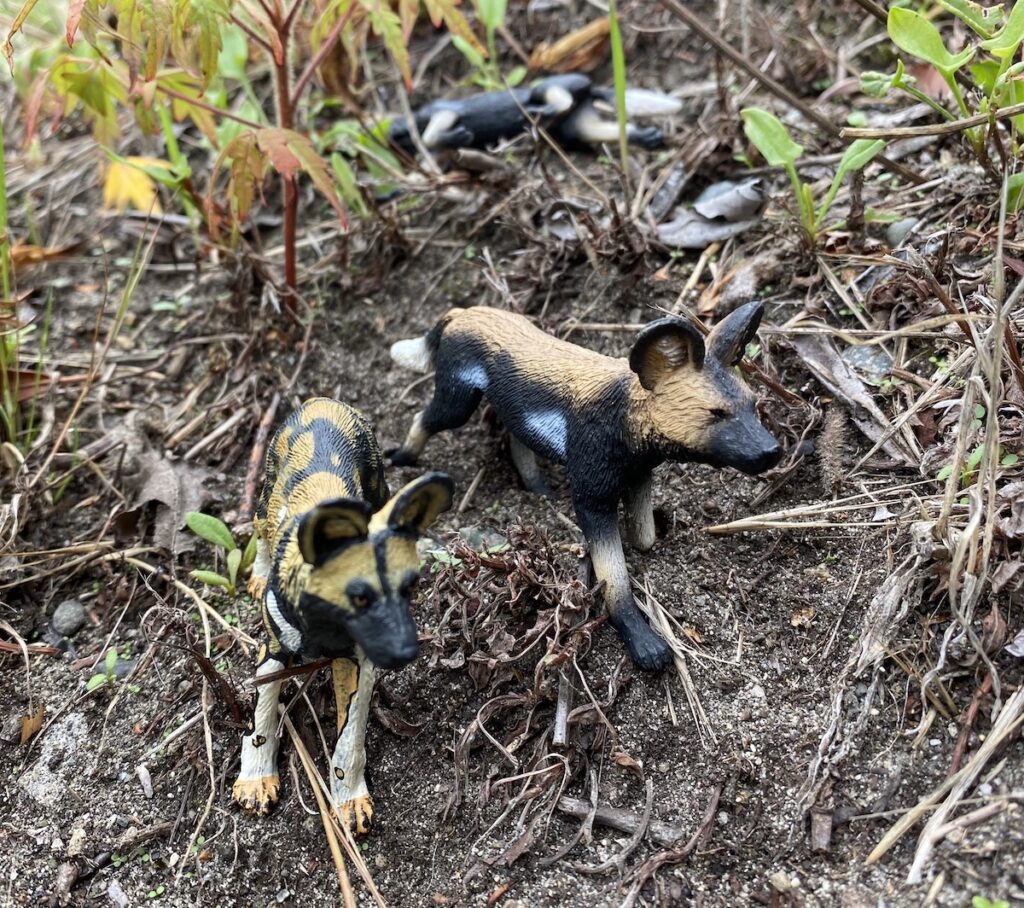
These are African wild dogs (Lycaon pictus), also commonly called painted wolf or cape hunting dog. Of all the species of canine native to Africa, they are the largest.

Today, I wanted to review a couple of figures of these beautiful and highly endangered dogs. The two figures are from Safari and Mojo. I watched the PBS documentary about African wild dogs called Dogs in the Land of Lions that follows a pack of dogs for two years. I was inspired by the story so I decided to photograph both figures together to somehow tell the story.

After taking the photo, I decided to review both figures together since I knew it was inevitable that I will talk about the other figure as well ( I originally planned on reviewing just the Safari figure), that’s how this review ended up as another double.

African wild dogs are highly nomadic species that move around the vast plains and savanna following migrating herds of antelopes. They are also called painted wolf (not really a wolf) due to the patters and coloration of their fur which is a combination of black, white, brown, orange, and various shades in-between. Coat patterns and colors are extremely variable between individuals, no two dogs are alike There is also a distinct difference between populations from those from the northern part of their range that tends to be blacker with small yellow and white patches, while those from the southern range tend to be more colorful with a mixture of brown, orange, and white patches on tier coats.
Safari figure
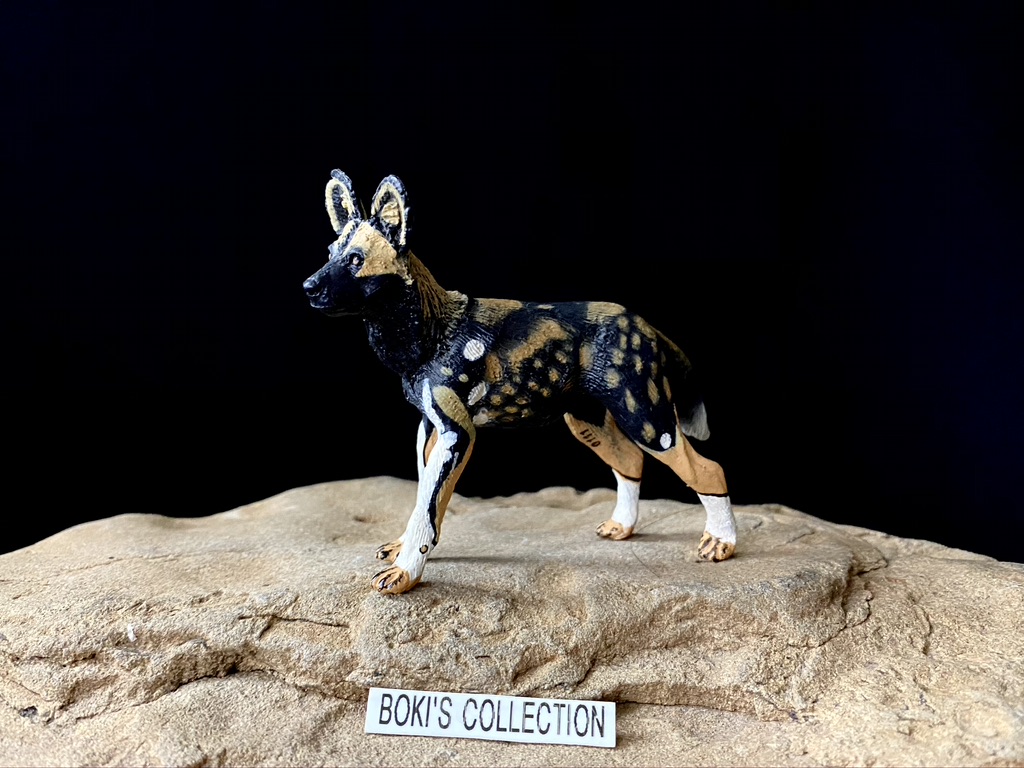
The Safari figure is the more colorful of the two figures, displaying various combination of white, brown, and orange spots. The poses between the figures are also different from each other. The Safari figure is standing in an alert pose with all of its feet firmly planted on the ground.
Mojo figure
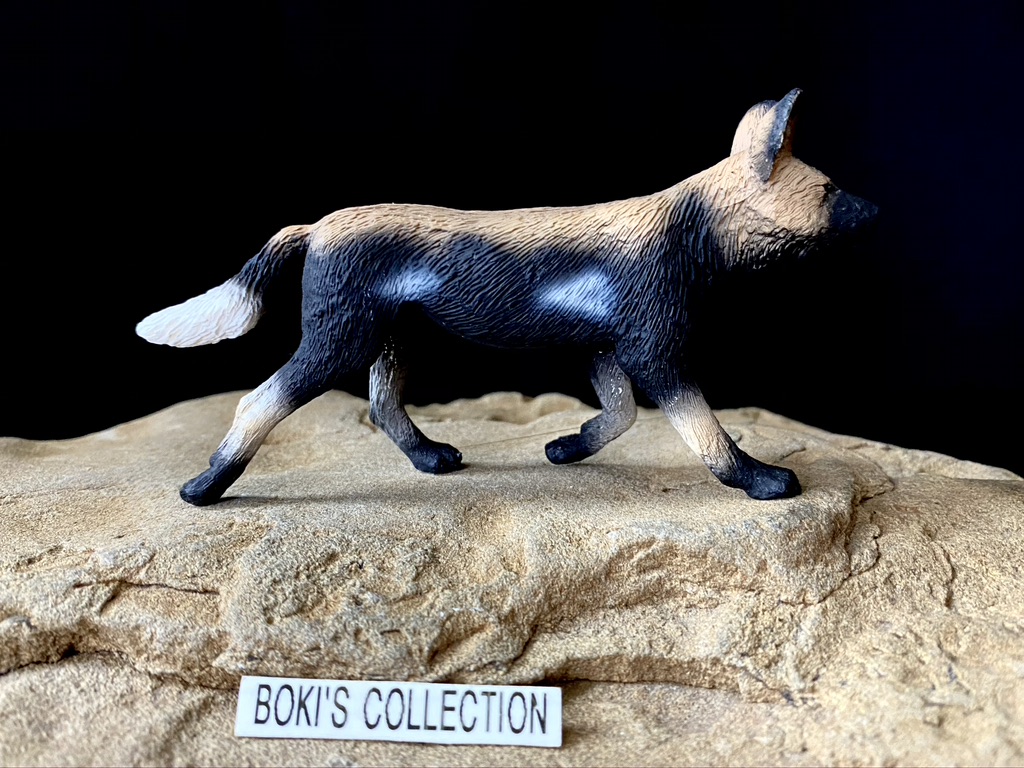
This is the darker of the two with the majority of the body being black or dark brown, with some white spots on its side. The Mojo figure is more active, posed in a semi-trot with its legs stretched out. These differences in posture give a nice contract between them and depicts two possible activities. The figures are roughly the same size, the Mojo being slightly longer due to the stretched-out pose.

The African wild dog is one of the largest wild canines, only surpassed in size by the extant wolf. They typically stand around 30″ inches or 2.5″ feet tall at the shoulder and could weigh between 40-70 pounds when fully grown.
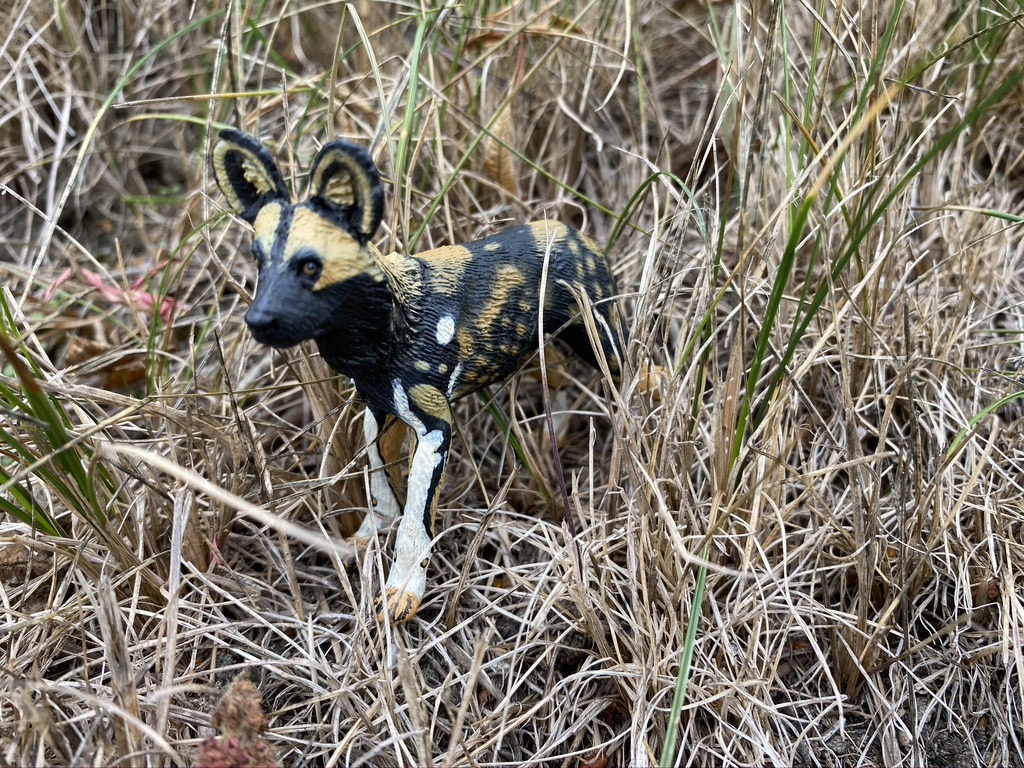
Besides their unique fur patterns, another distinctive feature of the dogs is their large rounded ears. Both of the figures have the correct shape and size of the ears, with the Safari version posed in a more erect way while the Mojo ones are slightly pulled back.

African wild dogs are efficient hunters that do most of their hunting during the daytime (diurnal) when most of the other large predators such as lions are not active. Only the cheetah hunts during the same time of the day as the dogs and they also go after similar-sized prey.
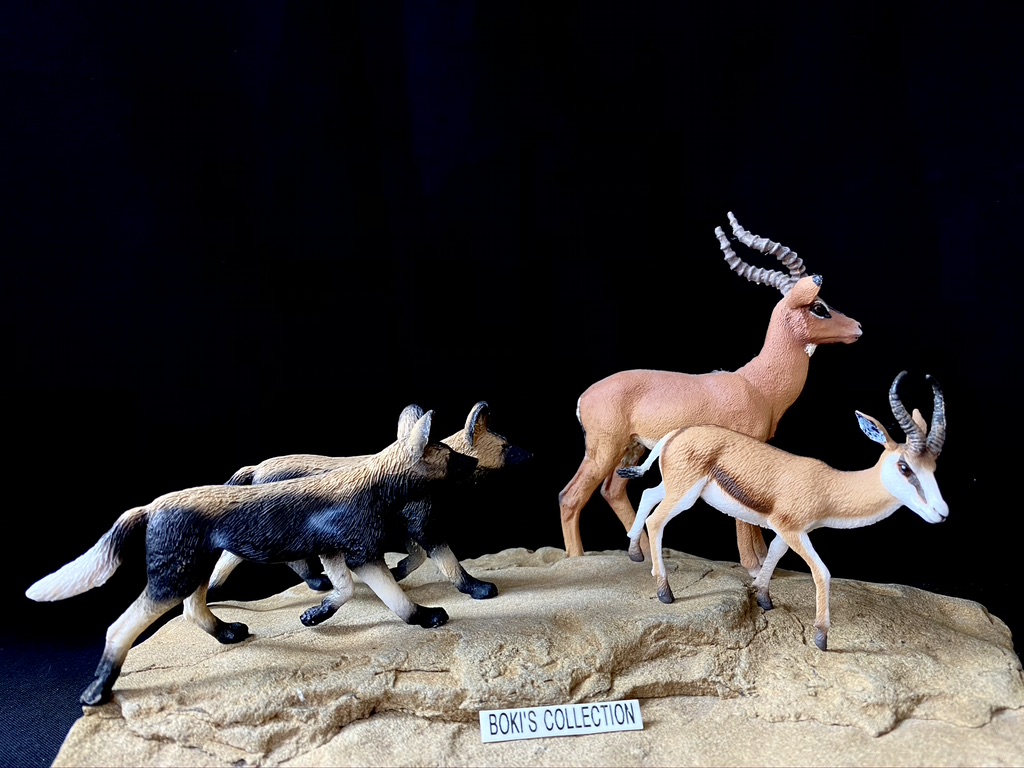
As prey species go, wild dogs prefer and specialize in smaller to medium-sized antelopes such as impalas, Thomson’s gazelles, and springbok, that are easier to catch and pose less of a danger. The pack will chase down their prey and can run up to 40 mph, and endurance to match, exhausting their prey.
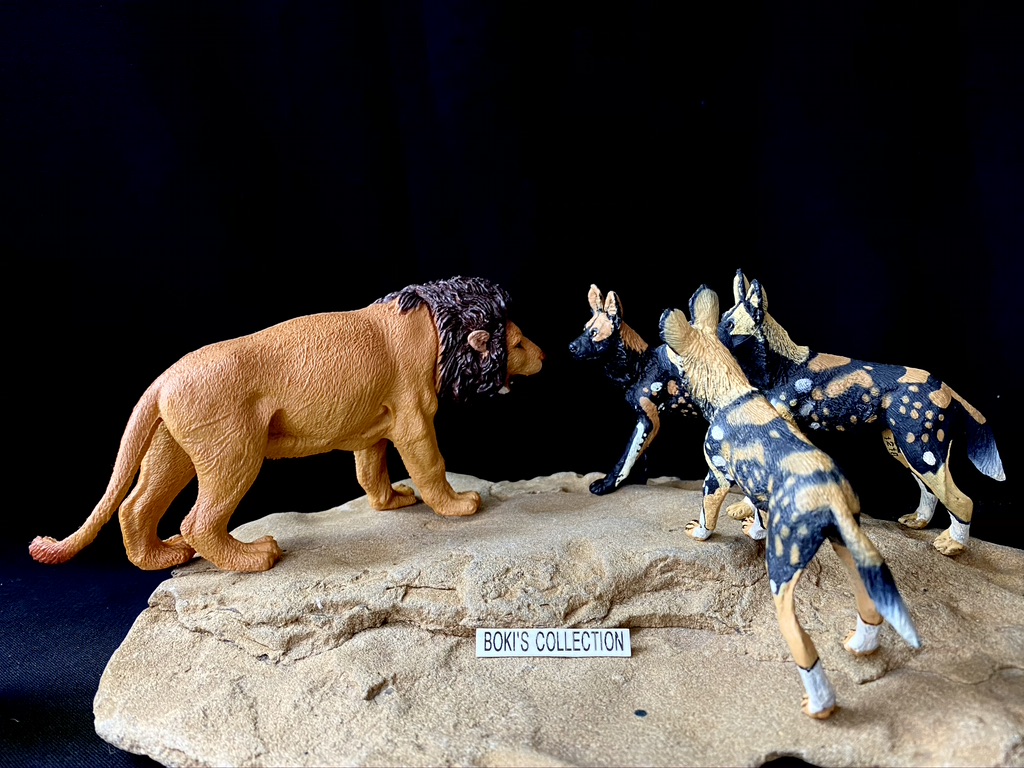
Lions are a major threat to wild dogs and will actively hunt and try to kill them every chance they get. Hyenas can also pose a threat, especially if they outnumber the dogs, but mostly, they will drive the dogs away from their kill. But the biggest threats to wild dogs are habitat fragmentation, human persecution, and outbreaks of disease (usually transmitted by domestic dogs).

As nomads, the continued habitat fragmentation severely limits the dogs’ movements and often brings them into contact with humans and their domestic animals. Being highly social animals, like many canines, they easily transmit disease to each other. If one animal from a pack gets infected by a highly contagious disease such as rabies, it could spread to the entire members of the pack and wipe them all out. This is what happened to this pair’s original pack.
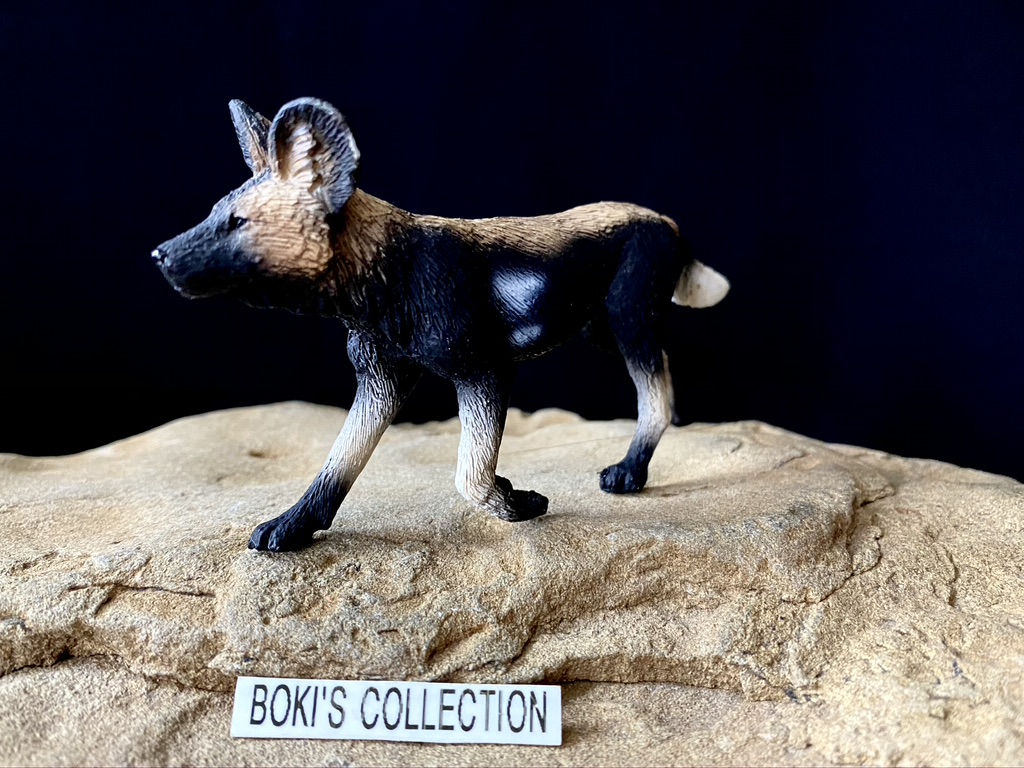
With all of these threats, wild dogs are now highly endangered with populations separated from each other. It is estimated that there are 6,600 adult animals left in the wild. Not so long ago, wild dogs ranged in most of Africa.

Today, populations that were once found in northern and West Africa are largely exterminated, while populations in central and northeast regions are greatly reduced and are barely clinging on. Only in their southern range where populations such as those found in Namibia, Botswana, and Zimbabwe can be considered healthy and have a good chance of surviving.
Well, that concludes our double review of Safari and Mojo African wild dog figures. I hope you enjoyed reading it, and thank you.

On our next review, we will leave Africa and go back to Asia. I hope that you will join me. Until then, stay safe and healthy. Cheers!
Disclaimer: links to Ebay and Amazon on the AnimalToyBlog are affiliate links, so we make a small commission if you use them. Thanks for supporting us!




Wonderful review as always, OkapiBoy. I have the Safari figure in my collection!
Nice presentation. The Mojo African dog looks like the East African subspecies which are smaller and their coats are mostly black with little or no white on them. The Safari ltd African dog looks like the South African subspecies which are larger and heavier and have noticeably greater colour variety in their coats.
btw the Safari African dog pups are nice figures in themselves….i’m not sure how puppy like they look but they make great 1/20 scale African dog adults to harass a Schleich warthog or some of the collecta antelope.. The Safari and Mojo adult dog figures are really too big to be compatible with those types of figures.
Yes, the different colors of the figure makes a good representation of the regional variations of the species.
I have the safari pup, but I couldn’t find it in time for the review .